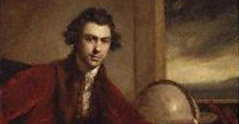|
JAPAN THROUGH WESTERN EYES:
Manuscript Records of Traders, Travellers, Missionaries and Diplomats- 1853-1941
Part 2: Journals and Student Essays
Part 3: Correspondence and Scrapbooks
Part 4: Collected Papers of Brown, Perry and others
Part 5: Writings by Griffis
Biographical Note
William Elliot Griffis was born on September 17, 1843, in Philadelphia,
Pennsylvania. The second son in a large family, early in his life he was exposed
to decisive influences of family and culture. His mother, a devout churchgoer,
instilled in Griffis a profound faith and confidence in Christianity. His father
was a coal-merchant, involved in the rapid expansion of international trade in
the burgeoning nineteenth century American economy, travelling as far away as
Europe, Africa, China and the Philippines. Among the significant events of his
early life, Griffis later recounted with pride his witnessing, from his father's
shoulders, the launching in 1850 of the USS Susquehanna, the largest
steamship then built, which was soon to be used by Commodore Matthew Calbraith
Perry as flagship on the historic mission to open the far-away island empire of
Japan. Again, Griffis recollected, in 1860 he was in the crowd of admirers when
the first Japanese embassy to the US toured the city.
Griffis served briefly in the Civil War in Pennsylvania's 44th Regiment.
After the war, aware that advancement in his chosen fields of divinity and
letters required higher education, Griffis entered Rutgers College in the class
of 1869. It was at Rutgers (notwithstanding his earlier brushes with the East)
that Griffis first became properly aware of Japan. A classmate and close comrade
was Robert Pruyn, Jr., son of Robert H Pruyn, the successor of Townsend Harris
as US Minister to Japan from 1861-1865. Among Griffis's and Pruyn's
activities at Rutgers, their founding of the Rutgers Targum is memorable.
Of much greater significance, however, was the appearance at Rutgers of the
first Japanese students to come to the US to learn English and Western sciences.
The first Japanese students in the US were directed to Rutgers through the
offices of the Dutch Reformed Church Board of Foreign Missions in New York. They
were 'Ise' and 'Numagawa', the assumed names of the Yokoi Brothers,
nephews of the reformer Yokoi Heishiro. Soon joined by others, notably the
brilliant Kusakabe Taro and the flashy Soogiwoora Ko-Zo (Hatakeyama Yoshinari,
briefly to be Superintendant of the Kaisei Gakko in Tokyo), these students
formed the nucleus of a thriving community of expatriate Japanese, ambitious and
proud young men determined to master Western learning for the benefit of their
emerging nation. Not only did Griffis move in the same social circles as the
Japanese, but also tutored a number of them, including Kusakabe, in English and
Latin.
It was natural, therefore, that Griffis should be offered a position "for
a young man single not a minister to go to Japan and teach Nat[ural] Sciences
and organize educational work generally". The offer was forwarded by D
T Reiley of the Rutgers Grammar School: the applicant was to go to the province
of Echizen, whose Daimio, Matsudaira Shungaku, was among the most
forward-looking Japanese statesmen of the pre-Meiji period. Griffis, perhaps
still unsure of his professional course after a year at the Union Theological
Seminary, but undoubtedly fascinated by the possibilities, accepted and sailed
for Japan. He arrived in Echizen in early 1871.
Griffis's work in Echizen (renamed Fukui) and, after a year, in Tokyo at
the Kaisei Gakko (later to become Tokyo University), and his contributions to
educational reform, have been discussed by historians. A number of series in the
Griffis Collection, most notably the Student Essays (in which are collected a
number of essays written as school assignments by Griffis's Japanese students,
and saved by him), represent this work. Of at least equal significance, however,
was Griffis's freelance work in Japan. Travelling widely, and moving in social
circles with missionaries and other yatoi as well as with the élite of
the early Meiji government, Griffis worked from the beginning with awareness
that in Japan, he had a subject for which his methods of working were well
suited. He immediately began writing for the popular press, both the
English-language press in Japan and for American periodicals and reference
books. In 1874, he returned to the US where he sensed that his career prospects
as a writer were considerably enhanced by his exposure to a field of study still
largely open. And this proved to be the case, as was demonstrated by the
publication in 1877 of The Mikado's Empire. The book, the first
monograph to treat Japanese history and culture systematically for an American
and British audience, met with immediate critical and popular success, and
eventually went through twelve editions.
< Back
|
|















